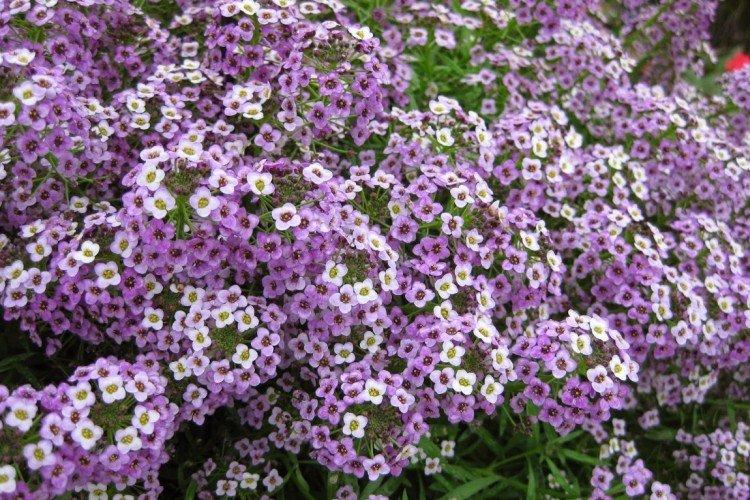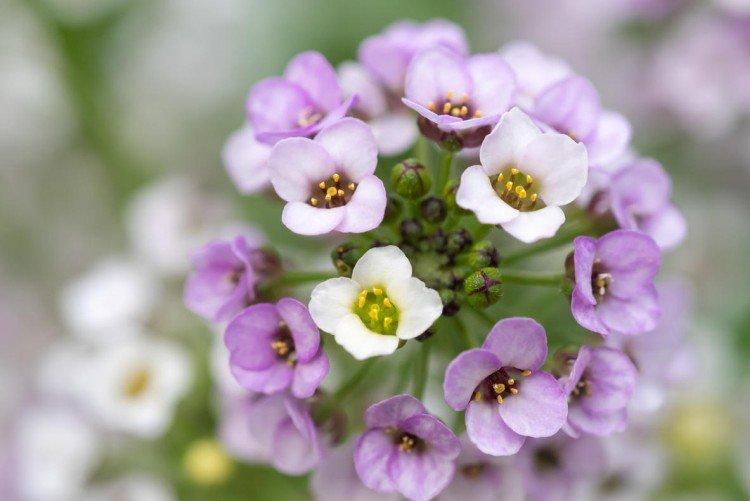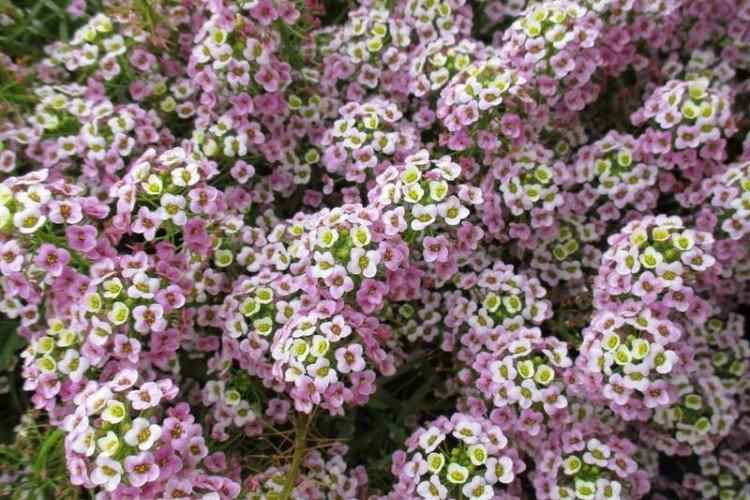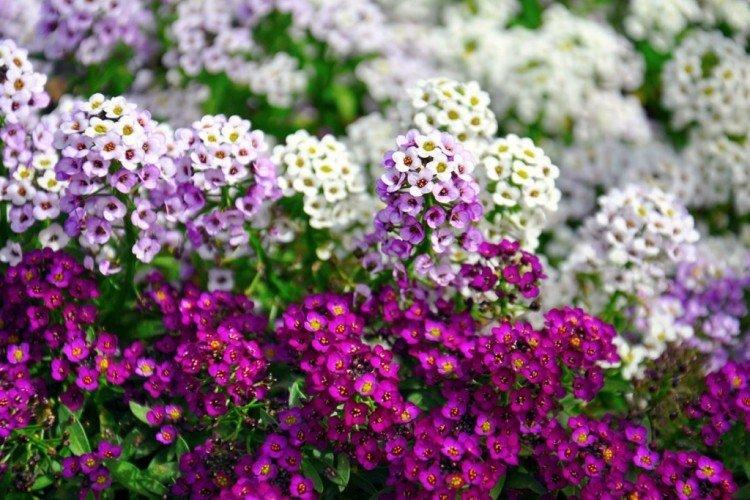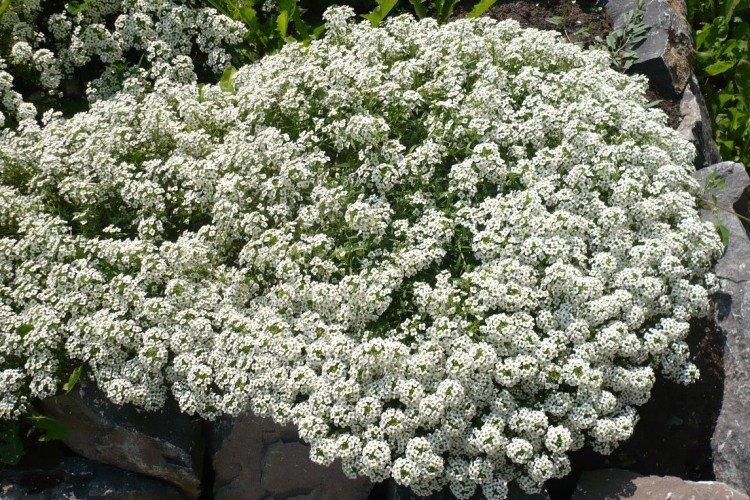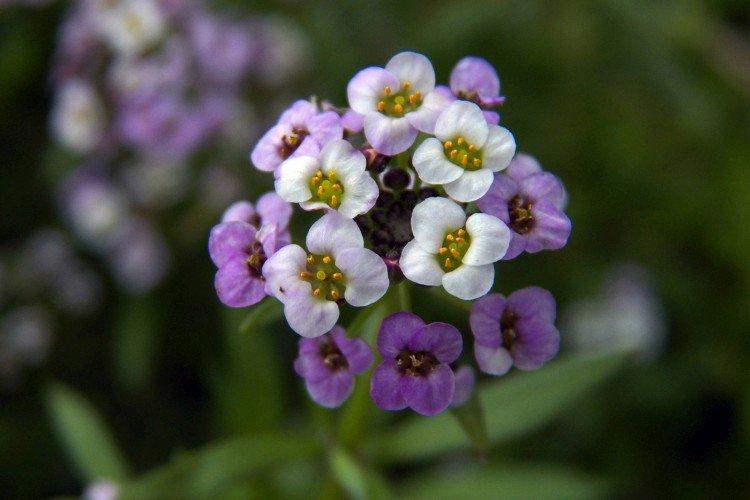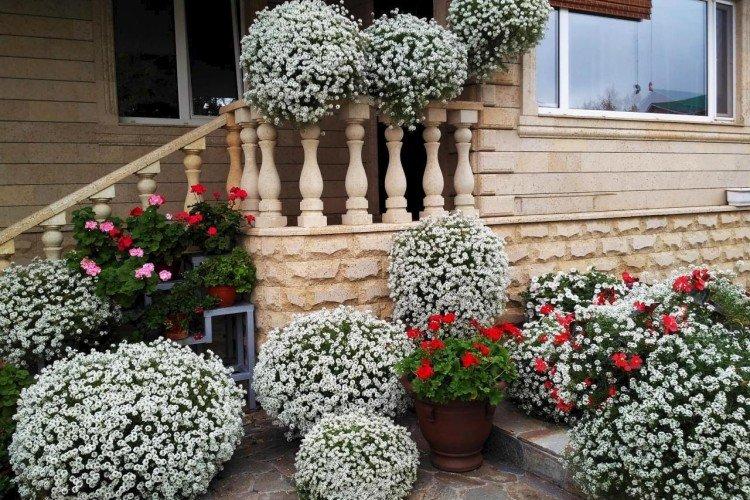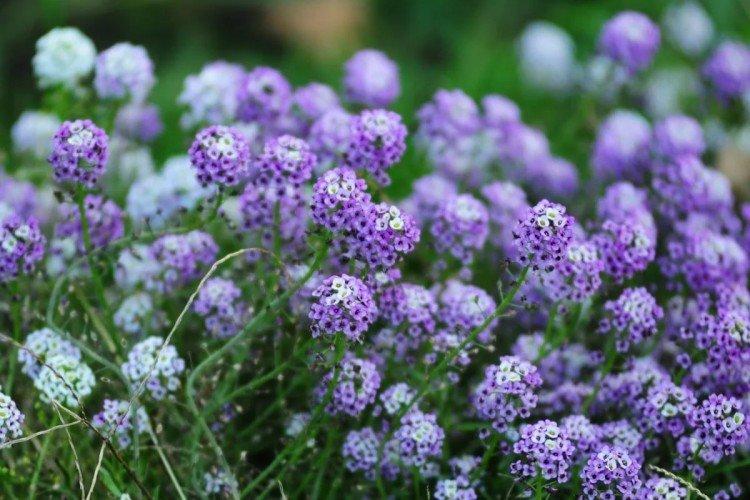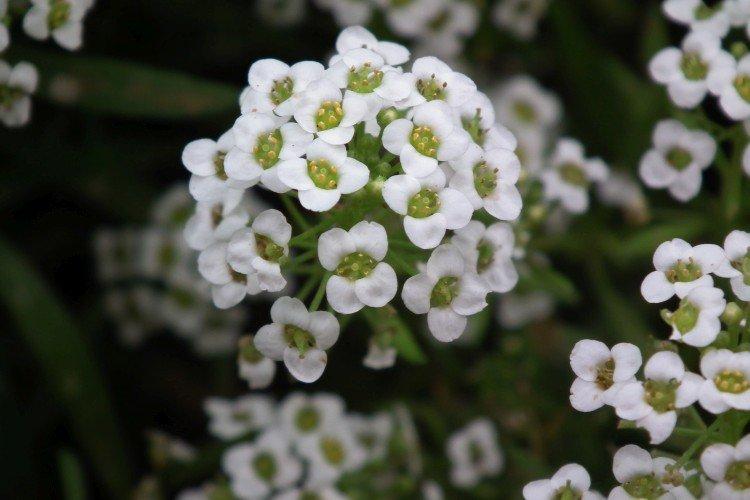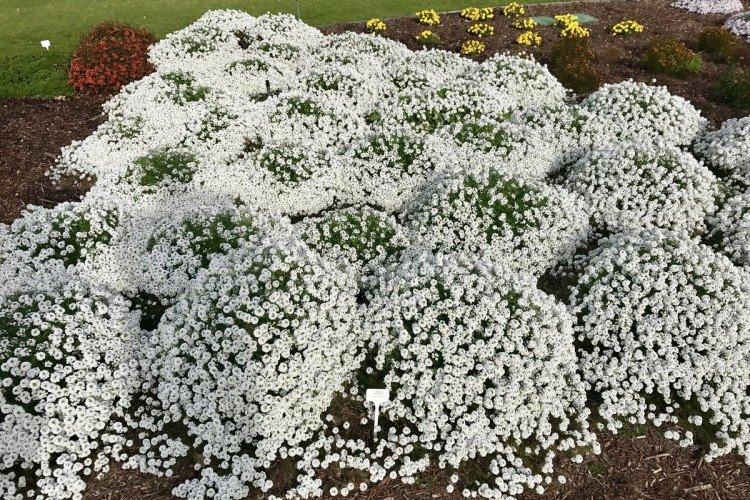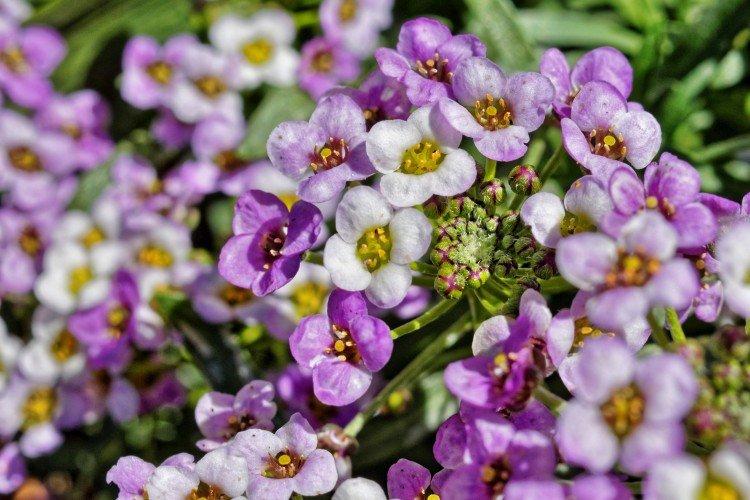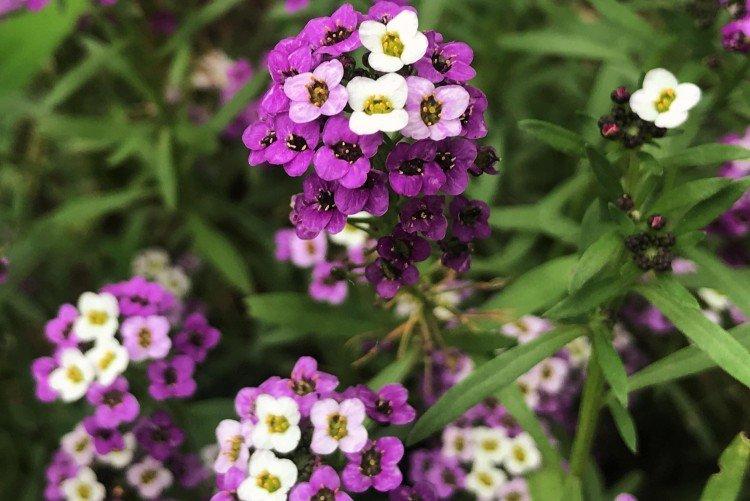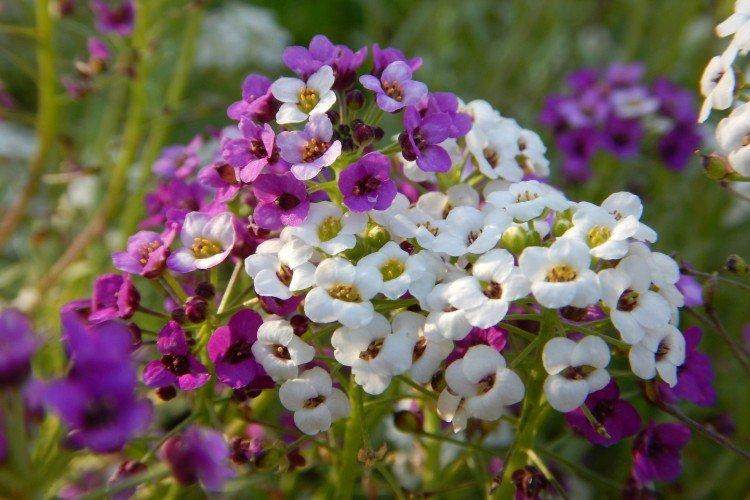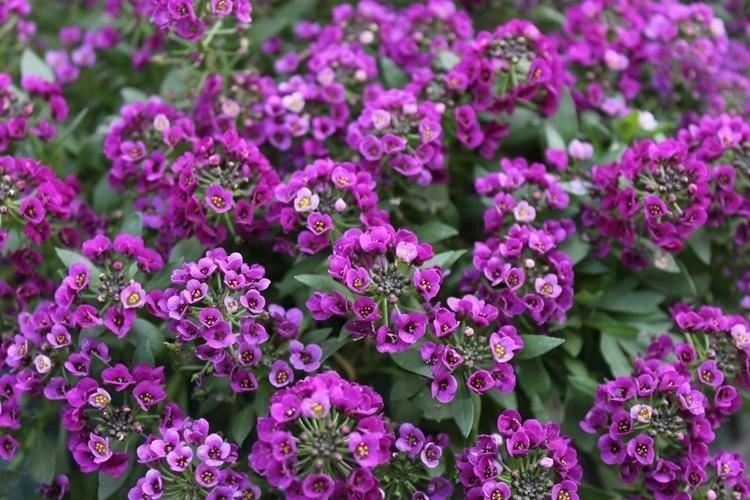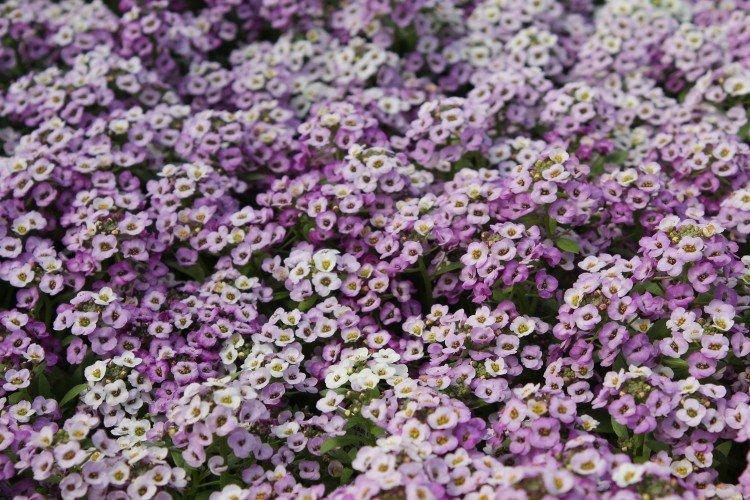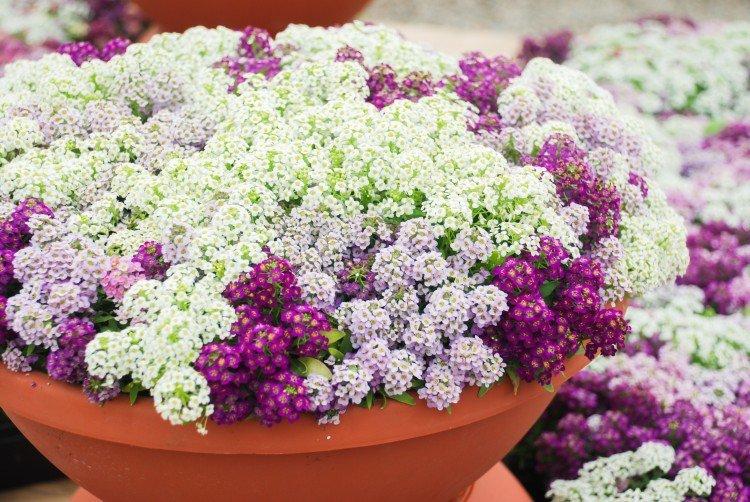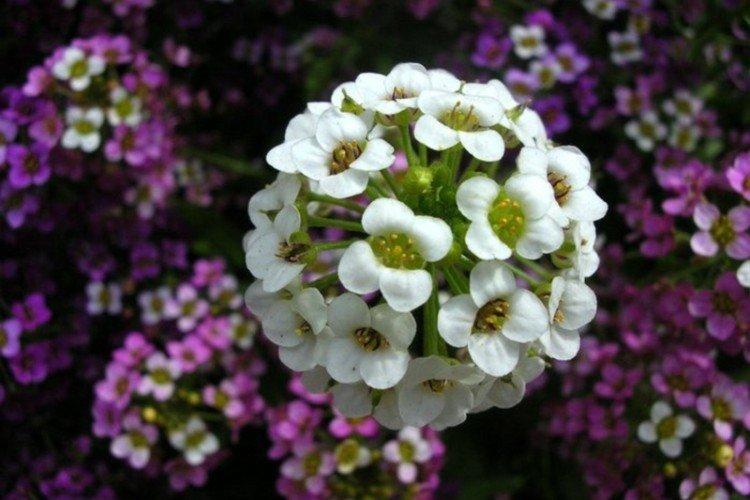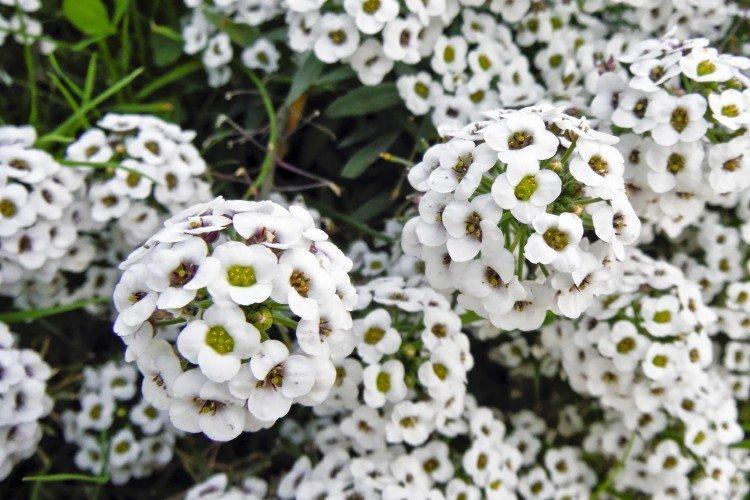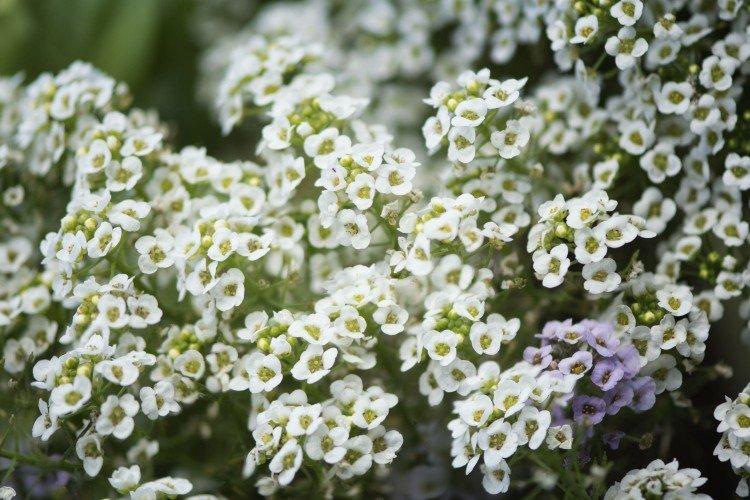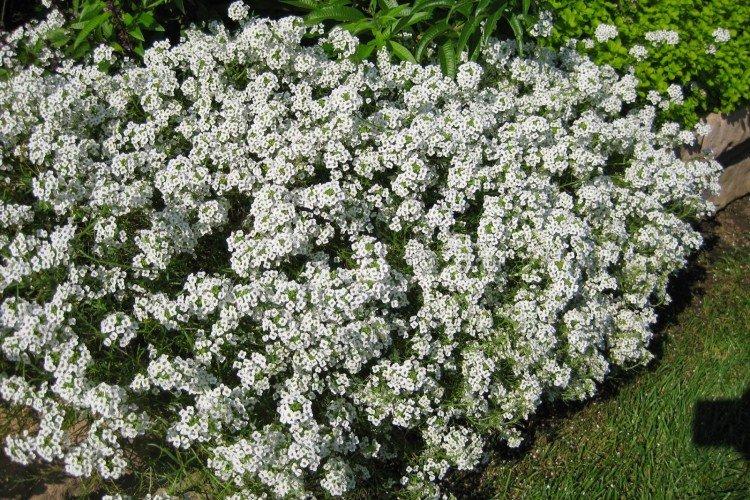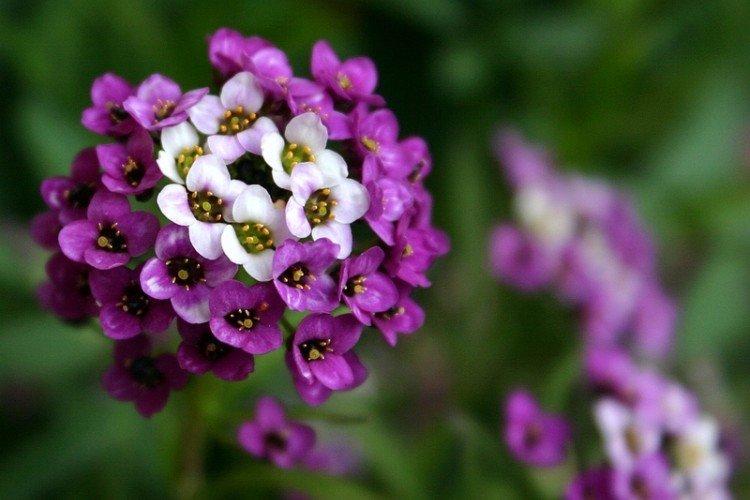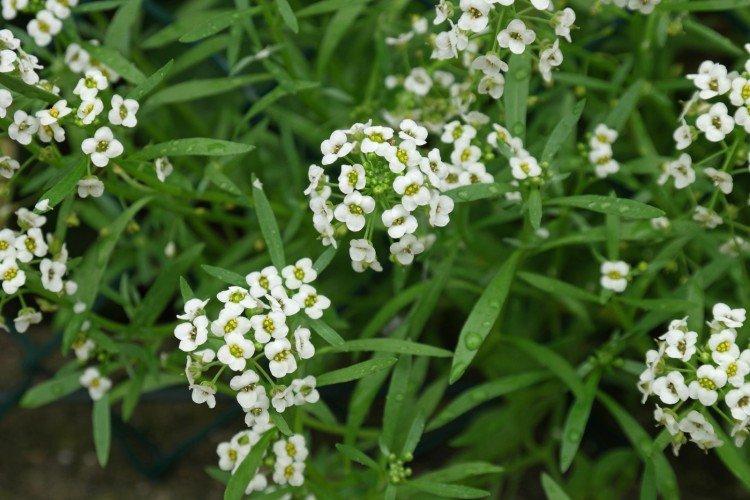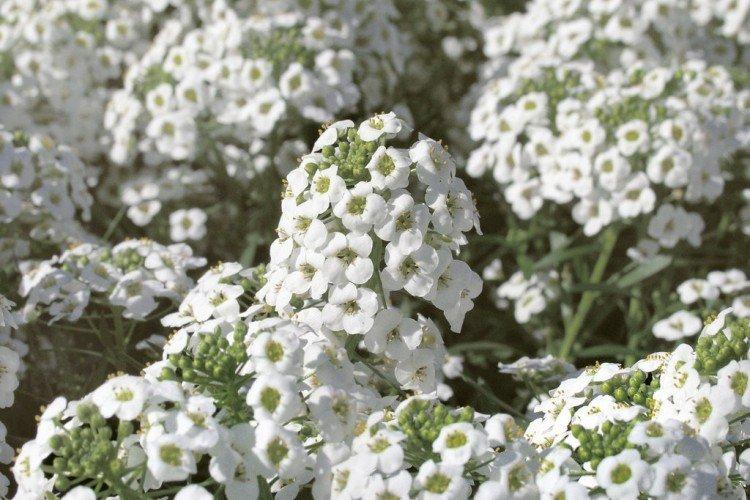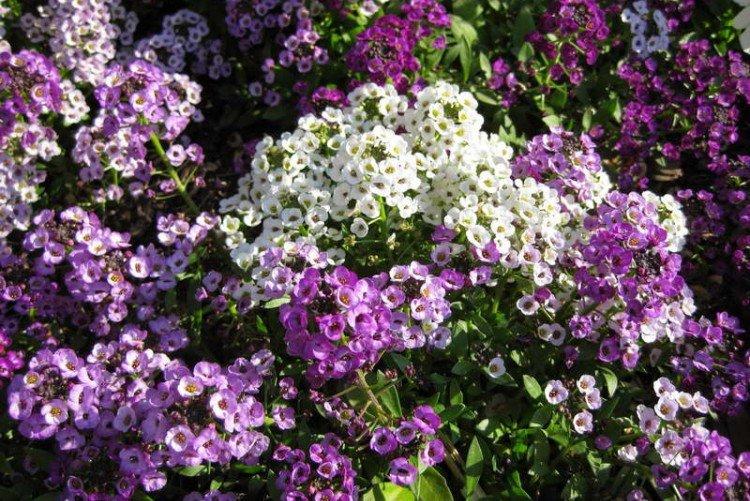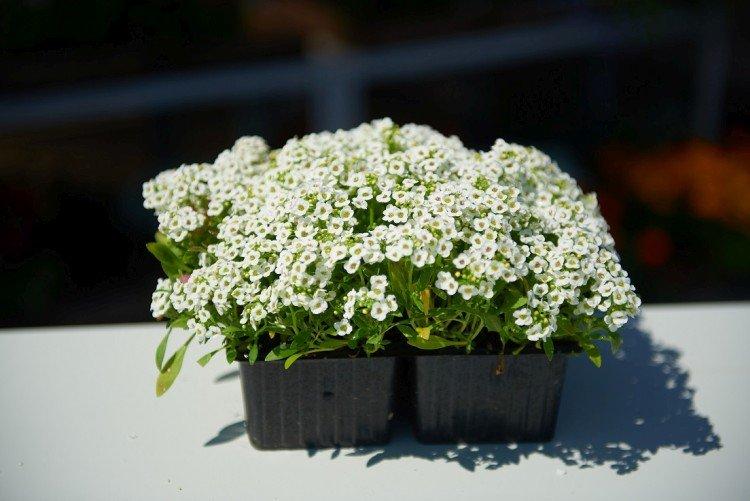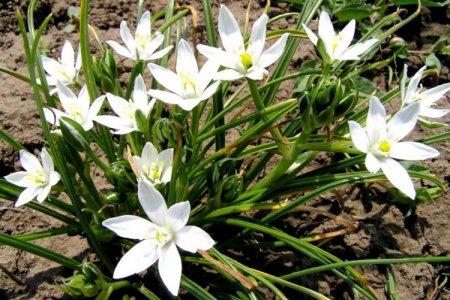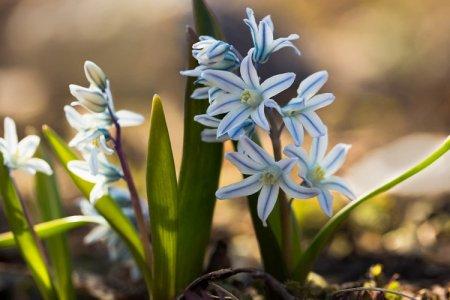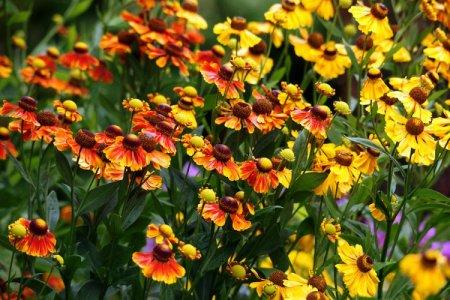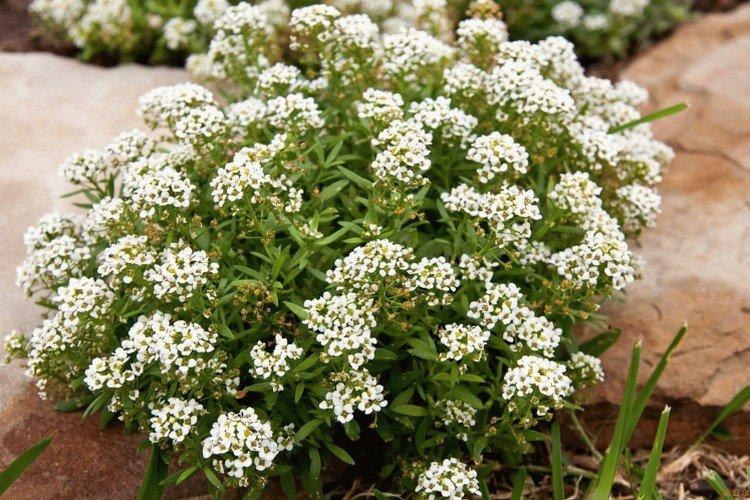
The closer the end of summer is, the smaller the choice of beautiful decorative flowers for decorating the site. And then a modest but very effective lobularia comes to the fore. By the fall, she becomes a real star in any garden!
general information
Lobularia belongs to the extensive family of the same name, but is a unique representative of it. Formally, this is a summer flower, but it is often considered an autumn flower for its late flowering. Moreover, it can be extended until winter.
Lobularia boasts an impeccable regular shape and a bright aroma of small flowers. They are collected in small brushes and look very bright in the garden. Every year breeders work on new decorative shapes and colors.
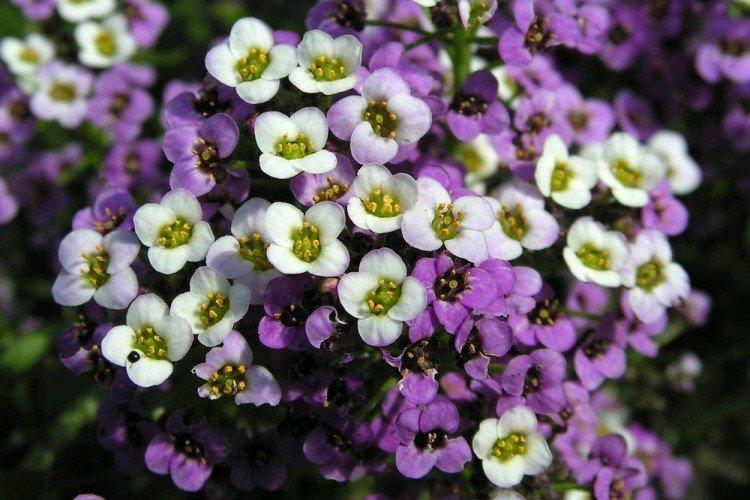
Lobularia species
Lobularia is not the most extensive and diverse genus. And in ornamental gardening, only one species and its garden forms are used at all. This is a marine or seaside lobularia, which forms a dense spherical bush about 30 cm high.
Leaves and shoots have a slight silvery pubescence. At the end of May, the lobularia releases fragrant paniculate inflorescences with small white flowers, which then turn into the same small pods. The most popular varieties are Royal Carpet, Oriental Night, Bentham, Variegata, Tiny Tim and Salmon.
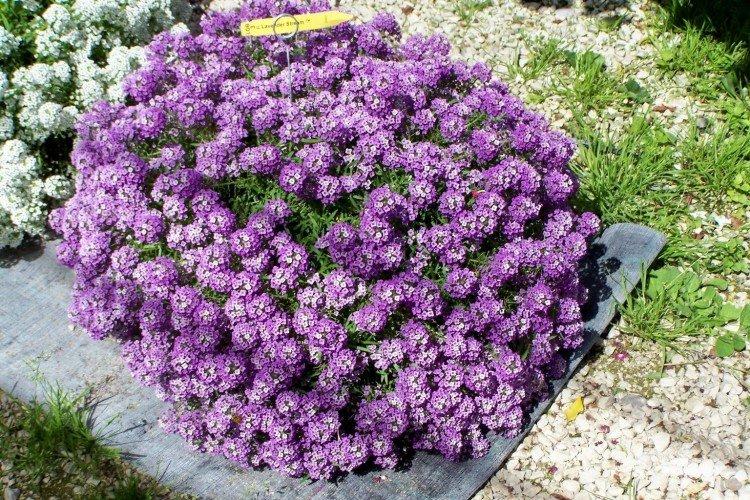
Lobularia care
Lobularia is good because it grows in almost any conditions. Only bright sunlight is fundamentally important for her, but everything else is already insignificant details.
Temperature and lighting
Lobularia is not at all afraid of minor frosts, so that it can be safely planted in the ground. It needs bright sunlight and blooms very poorly in the shade.
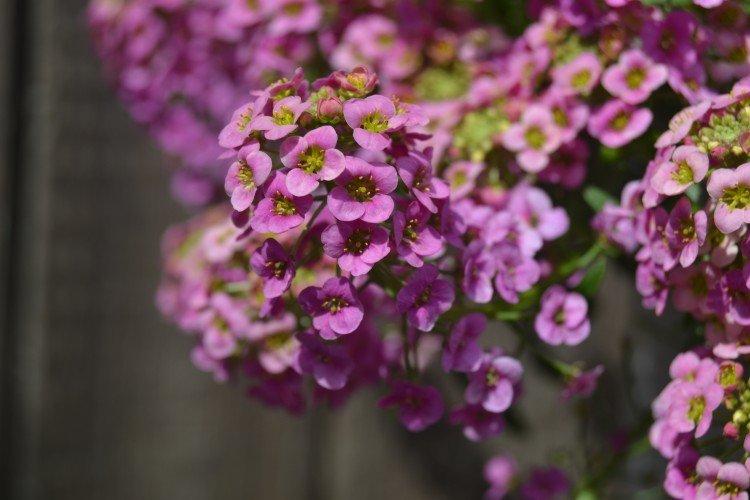
Watering
Lobularia does not need additional watering, especially since it will not save from the heat. Watering makes sense only during a prolonged drought or in the first few weeks after transplanting seedlings to the site.
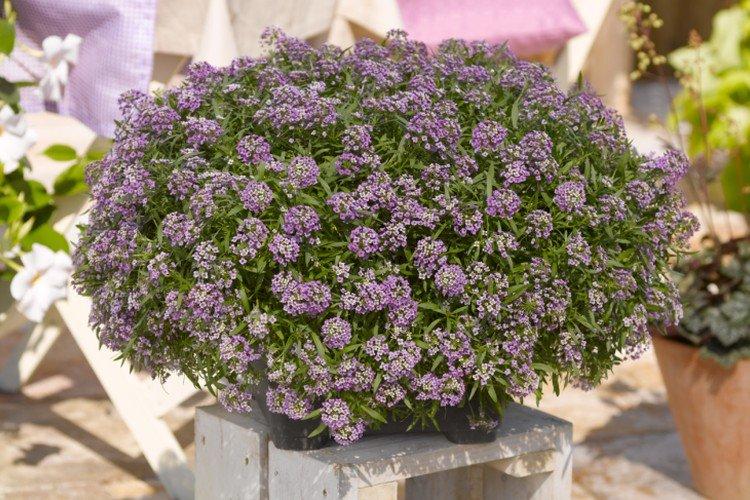
The soil
Literally any soil is suitable. If it is not too wet, the groundwater is deep enough and the area is not prone to waterlogging - nothing else is needed.
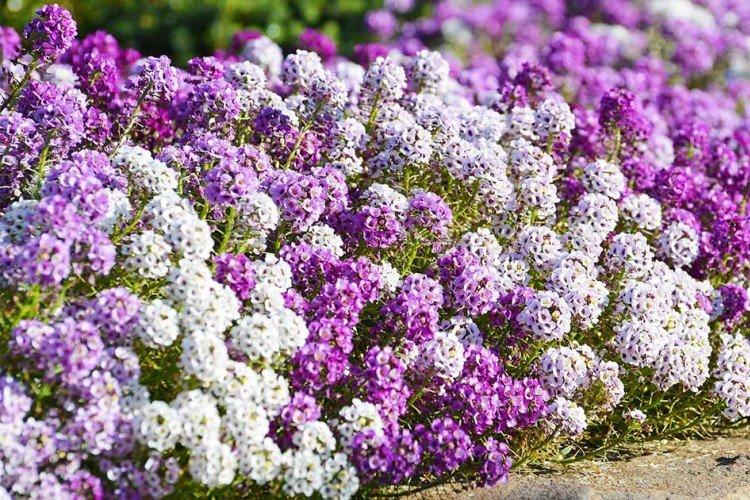
Fertilizers and feeding
Lobularia are not needed for feeding. They will not be beneficial and may even harm the plant. There are more than enough nutrients in ordinary garden soil. But light complex dressings sometimes help prolong flowering.

Pruning
To stimulate long and continuous flowering, prune withered shoots immediately. So the plant will not waste useful resources on it and will soon release new buds.
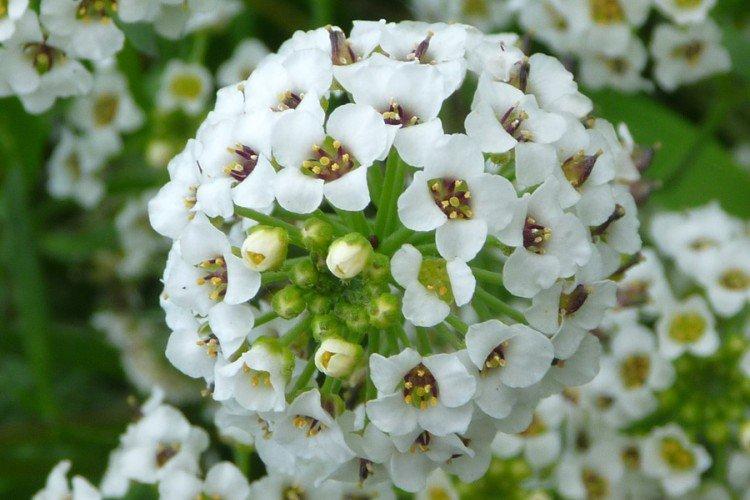
Wintering
Perennial varieties do not tolerate frosts below -15 degrees, so shelter is imperative. You do not need to cut off the shoots. Just cover them on top with a thick layer of dry leaves.
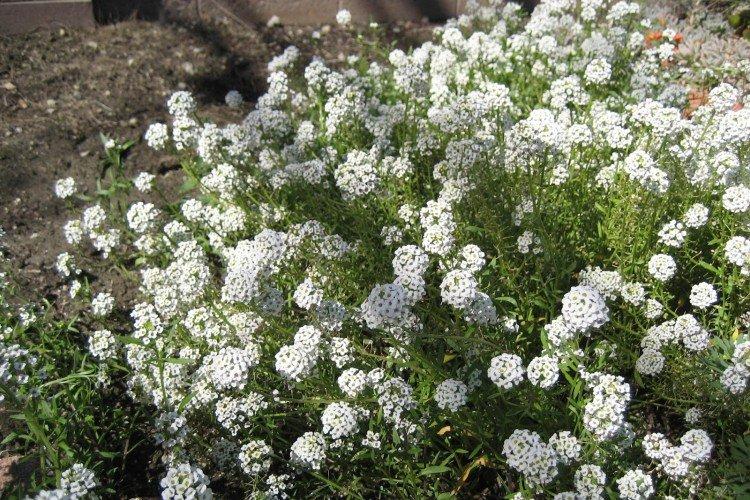
Planting and reproduction of lobularia
Lobularia is sown immediately in open ground at the end of April or end of November. When planting in autumn, cover the area with non-woven material, and the flowers will wake up in early spring. Leave a distance of about 20 cm between the bushes and never thicken the planting.
Seedlings are sown in containers in March, and seedlings appear in about a week. As needed, they need to be thinned and dived, and in May they can be transplanted into the garden. So it will bloom about 40-50 days after sowing.
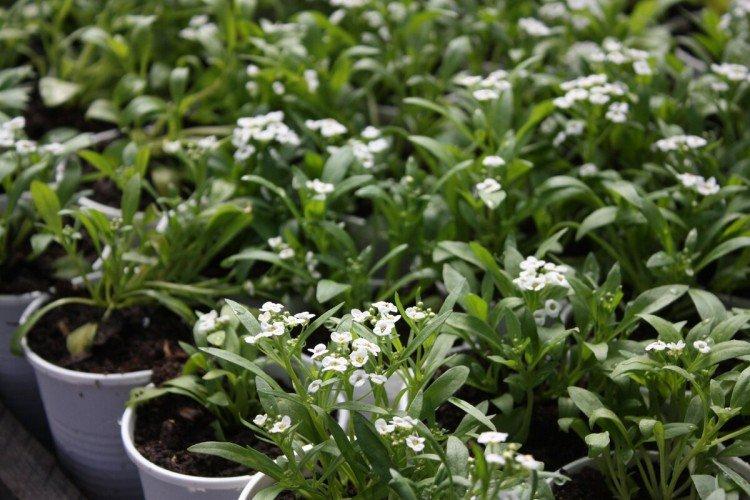
Pest and disease control
Lobularia is rightfully considered one of the most persistent annuals. Only excessive moisture in combination with thickening of the planting leads to the development of fungal diseases. These are powdery mildew, rust and rot. In this case, the flower bed must be thinned, dried and treated with fungicides.
Sometimes caterpillars, leafhoppers and aphids settle on lobularia. Chemicals work best for them.But if there are still few pests, you can try fragrant homemade decoctions, such as citrus.
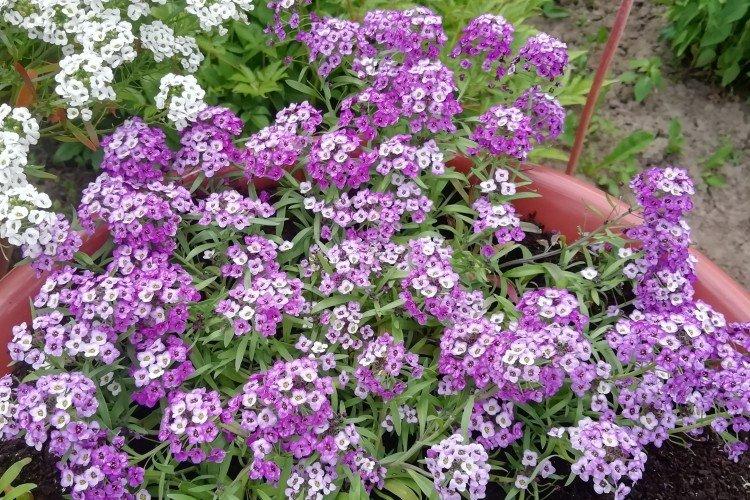
Lobularia - photo
Lobularia is used anywhere and in any way. For decorating borders, rockeries, alpine slides, flower beds, rabatoks, balconies and terraces. Watch and be inspired!
